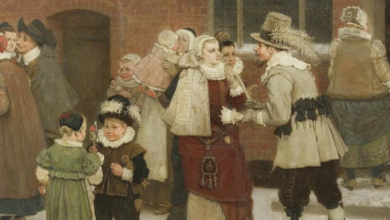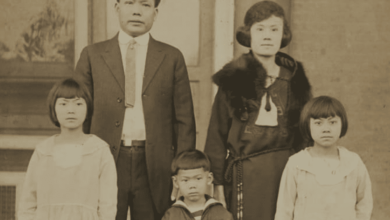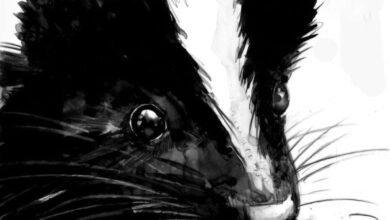Otto Hillig: Photographer, Aviator, and Castle-Builder


 Robert Penn Warren once wrote that there are two main types of American hero. President George Washington is the first type: His inspiring biography and accomplishments have acquired the luster of myth. He’s become an unapproachable ideal. Less lofty is Benjamin Franklin’s type of hero. Franklin shared America’s love of gadgets and applied science.
Robert Penn Warren once wrote that there are two main types of American hero. President George Washington is the first type: His inspiring biography and accomplishments have acquired the luster of myth. He’s become an unapproachable ideal. Less lofty is Benjamin Franklin’s type of hero. Franklin shared America’s love of gadgets and applied science.
We admire him for being, as Warren writes, “the very model of the Industrious Apprentice who, by…. thrift, self-denial, temperance, prudence, and…. calculation… rises, without social, financial, or intellectual advantages, to high solvency and world fame.” His limitation was: He “seems what you yourself, with just a little luck, might be,” as well.
Otto Hillig, photographer and adventurer, was that second type of hero.
Born in Germany, he lived most of his life in Liberty, Sullivan County, New York. He, too, rose to “high solvency and world fame” (if not at the scale of a Franklin) by largely his own efforts.
His rise started at the turn of the 20th century, as his photo studio became established. For years, well-off vacationers to the Catskills, many from New York City, paid him handsomely to take their photographic portraits. Hillig also created well-selling lines of picture postcards and regional souvenir-booklets.
Matthew Jarnich, a modern, Catskills-specialized photographer writes that Otto Hillig “can be considered one of the great photographers in Catskills history.” Jarnich’s website, worth visiting, showcases many examples of Hillig’s postcards.
Otto was always eager to learn, and sometimes advance, new techniques in, for example, aerial photography and moving pictures. But he was, by and large, what now we’d call an early adopter of new technologies, rather than an inventor.
A local paper, The Liberty Register, found it newsworthy in 1910, for example, when Hillig “installed an electric piano in his studio.” That meant, back then, a player piano that still used paper music rolls to record the music, but electricity replaced foot-pumping for power.
Otto brought his same love of adventure to motorized vehicles. Buying one of the first “motorcars” in Sullivan County, he dramatically tested the speed and maneuverability of it — and of subsequent cars he bought — with, at times, alarming results. Notwithstanding run-ins (at different times) with telegraph poles, a truck, and a horse-drawn carriage, he liked to insist he “always comes back.”
Weeks before the transatlantic flight he became famous for, the Middletown Times Herald recounted whimsically (June 2, 1931) that Hillig earned his sobriquet “The Flying Dutchman” years before he ever entered an airplane: He totaled his fourth or fifth car in a burst of flames, after “speeding up the ramp to the second floor of a barn and [continuing on to crash] out of the back of the barn’s second story, [taking] a twenty-foot plunge.” He survived unharmed and bought yet another car.
In 1916, Hillig was inspired to tour the North American continent with a friend. They drove 9,500 miles, and Hillig submitted humorous updates of his progress to local newspapers. That seems to be when he discovered, and began honing, his gift for regaling public audiences with self-deprecating tales of his exploits and findings.
In public talks about his road tour, he also became an advocate for installing modern, electrical street lighting in Liberty, such as he had seen in other places.
The great performance of Hillig’s car’s tires on his journey were promoted in display ads for a local Ben Gerow’s tire-distribution company; Gerow may have helped sponsor the trip. Freemasonry historian C.F. Maurer has suggested, in an article for Phalelethes: The Journal of Masonic Research and Letters entitled “Otto Hillig: Freemason and Hero of Liberty, New York” that Ben Gerow became an influence or role model for Hillig in other areas, such as later going into politics and becoming a Freemason.
By 1929, Hillig felt ready to shell out $9,000 to fly on the celebrated Graf Zeppelin’s flight around the globe. Papers large and small, such as in eastern New York, the Red Hook Advertiser, found it prestigious to be on the passenger list.
Unfortunately for Hillig, however, his ticket for that flight was cancelled. Some claim the flight organizers double-sold Hillig’s seat, since some seats were being purchased over in Europe; so, he was bumped. But the Brooklyn Eagle repeats a more interesting theory: “He would not sign that section of the contract which prohibited taking commercial pictures.” He certainly did plan to bring a camera; but the connection of that to his getting bumped may be speculation.
Regardless, Hillig would not be defeated by setbacks: He came out of his disappointment with plenty of money to buy his own plane in 1931. That’s because he sued the Zeppelin-flight’s organizers for damages, and settled out of court for $25,000 plus the refund of his ticket price.
With his new plane, he planned for a transatlantic flight to Denmark (the homeland of his intended pilot, Holger Hoiriis), and then a hop to his own homeland, Germany. A local editorial lauded this “original and spectacular” idea for bringing great publicity to his adopted city. You can see video of his flight’s take-off in a Universal Newspaper Newsreel.
Once Hillig completed that hazardous trip, if great acclaim and big parades on a safe return, and subsequent years of invitations to speak about his odysseys make him a hero, Otto Hillig was now approaching that. But Hillig never saw himself belonging on a pedestal.
Otto’s goals, he wrote in Liberty magazine that fall (Sept. 19, 1931) were simply: “To be remembered pleasantly when I am remembered at all, as the man who flew the Atlantic and then came on back home and went to work.”
That modest ambition might seem belied by Hillig’s starting to build a castle in 1934, including a turret. That marvel, Maurer described, was “made entirely of [local] Neversink River stone, nestled prominently on the top of Mount Washington,” near Liberty.
Hillig claimed it reminded him of castles he’d seen in Germany. But, in fairness, the structure was really quite small as castles go, and not designed to be lived in full time.
According to students who once visited it on a field trip, it was “a one-room cabin thaet was furnished like a hunting cabin…. On one side … is a tower with a large bell on top of it.” It was mostly a place where Otto could store souvenirs, and host picnics and meetings of groups he belonged to, such as a Masonic Lodge and a Lutheran Church brotherhood. Those uses suggest a different side of Hillig’s character.
Otto Hillig’s Contrasts
The public face of Otto Hillig portrayed a simple and straightforward guy. Asked by reporters in 1931 why he was making that expensive and risky flight overseas, he’d answer, “just for the fun of it” or “for the thrill.” He didn’t share the urgency of other fliers of that period — each striving to be in some way “the first” or to fly “the furthest.”
Hillig proved his sincerity in that regard, on June 24, 1931. He and his pilot were on pace to be the first team of that flying season to leave Harbor Grace, Newfoundland — considered the jumping-off point for flights to Europe. Before their plane was ready, however, another flight team, Wiley Post and Harold Gatty, caught up to them.
Post and Gatty planned to skip lunch so they, themselves, would be the first ones setting off to Europe. Far from trying impede or out-pace their would-be competitors, “Hillig, his pilot and his mechanic worked like beavers [to help Gatty and Post get away], and saw their plane off” — ahead of their own. A Binghamton Press and Sun-Bulletin reporter could scarcely believe this show of sportsmanship.

Hillig’s personality and feelings were more complex than he let on.
The first of his inner contrasts has already has been hinted at. Yes, as mentioned, Hillig was a risk-taking adventurer, and he enjoyed the attention and rewards that gained him. He loved telling how he scored an audience with the King of Denmark during his visit to that country, and was knighted. (It helped, as Maurer points out, that King Christian was a “Brother Mason” to Hillig.)
That Hillig, the daredevil, even refused to load a radio or a lifeboat on the plane to Europe — arguing, curiously, that he was flying as a private citizen, and not as some official. More poignantly, he added: “If we do go down…. no radio or anything else can save us. We need that room for gas.”
It turns out he was not wrong on that last point: Their plane meandered off course in bad flying weather, and did in fact run out of gas over Germany; so, he and Hoiriis had to land short of their initial objective, Denmark.
But that said, Hillig was in other ways almost a homebody. He was extraordinarily attached to his home city and state. He rarely left them, even when he began flying and driving around on speaking engagements. He named his plane Liberty — “repaying Liberty for its part in his good fortune.” And in published interviews — widely reprinted across the state — he said he didn’t view his big journey as life-defining or heroic at all, but simply a much-needed “vacation”— his “first” one after “working for 34 years.”
Well, all those years, he was a skilled, hardworking craftsman and small businessman. By 1898, he was already advertising “first-class” and “up-to-date” work in his own studio. In this field, his wealth increased, and he diversified his business activities to include, at times, real estate investment, and taking orders for musical supplies and instruments.
In short, Otto Hillig was not just the irresponsible joy-rider he sometimes let on. Maybe his having a life, and having something to lose, heightened the thrills for him when he did cut loose. Similar contrasts appeared in Hillig’s earlier history, so far as it’s known.
Ellis Island records show that he immigrated to America in 1891, at age 17, and his “calling” was “farmer.” So, plausibly, he did work on a farm, as some suggest. But other claims about him sound apocryphal. A White Plains-published obituary, for example, writes that Hillig once lived in White Plains and that he worked somewhere as “street car conductor.”
Could that be an appealing inference from his fondness for vehicles? Otto had a step-brother, discussed below, who recalled no such byways.
In any case, the adventurer Hillig would surely have found it thrilling to ride on a ship to America at 17, unaccompanied, and to try out new jobs in new locales, and to finally discover photography as a fun way to make money. If those things were the whole story, however, he might have, more suitably, toured exciting locales with a traveling carnival, and sold penny pictures to fair-goers.
To the contrary, he worked hard to establish a business at a fixed address. And he came up with tuition money to study formally at the Illinois College of Photography in Effingham, Illinois. It was a resident program, for blocks of time; so, he had to travel there, and arrange to have his studio business covered back in Liberty.
Local papers’ social clips show that Hillig first arrived on the Effingham campus in 1900; and he went back there for additional course work in 1904. He met, in 1900, a fellow student, June H. Carr, who later became a respected photographer himself, and briefly partnered with him in his Liberty business.
Reflecting his simpler side, Hillig kept living rather modestly even when he became financially well-off. (Not counting his side expenses for vehicles, or a castle.) He stayed living in the same apartment block, until most likely 1947, when he retired and sold his next-door studio. His castle was primarily used just for hosting picnics and community-type events.
That year when Hillig was in all the news for his flight, Binghamton Press and Sun-Bulletin put it in perspective: Nobody has done “as much for Liberty as Otto Hillig. And yet he did it in an almost monotonous way for a long time. He just went to his work every day attending to his business, was kind and obliging and did good work.” What a contrast to Otto Hillig, the “Flying Dutchman.”
Otto’s Extended Family
This is a side of Hillig he kept more private. We might think of Otto Hillig as a single, free-spirited, and emotionally unencumbered fellow; so, nothing held him back from taking risks. He said as much, himself, to a reporter, when asked why he did not pack a radio or other safety gear for his hazardous flight. I have no family to “care whether I go or not,” Hillig responded.
Well, that was not really the case.
Marriage records tell us he was married in November 1901, in Welland, Ontario, Canada, to Irish-born Margaret Withers. Maybe Welland was chosen so they could honeymoon in nearby Niagara Falls; no records show either of them were living in Canada. In any case, they separated after a few years; and Hillig went eventually to Reno, Nevada, to sue for divorce.
Perhaps Hillig’s lingering disappointment about his marriage breakup influenced him to say, when asked, he had “no family” to care.
Or maybe he was thinking, poignantly, about his mother, Pauline Fischer Hillig Schubert. Pauline was tragically killed in a kitchen fire, in 1915, right there in Liberty. She and her second husband, Karl Schubert, had immigrated to the United States in 1905, and they moved to a place in Liberty, roughly a mile from Otto’s home. She had been widowed a couple of years before the fire.
When answering the reporter in 1931, Otto might have been thinking about his mother’s no longer being alive and nearby — whereas, otherwise, she would have likely fretted for his safety.
Despite those losses, his life still remained intertwined with living, extended family, who would care about him. And he clearly cared for them, in return.
For one thing, Otto Hillig was not totally alone when he came to America. He was preceded a year earlier by his step-brother, Ernest Schubert, son of his mom’s second husband. He was a couple of years older than Otto. When interviewed by the Boston Globe in the lead-up to Hillig’s 1931 transatlantic flight, Schubert recalled that, to help Otto first come over to the U.S., Schubert sent money back to Germany; and some time later, he offered financial assistance towards Otto’s setting up his studio. (Schubert made no mention of trolley-car jobs.) Otto planned to visit Ernest at his home in New Hampshire, when returning from his transatlantic flight.
Hillig was given this leg up in America by an extended-family member, whom he kept in touch with. Some years later, he would give forward, as we’d say now, to others.
His German niece, Elsa Hillig, for example, arrived in New York alone by ship, at age 16, in 1914. In New York Arriving Passenger and Crew Lists, Otto Hillig was named as Elsa’s uncle and her “person in U.S,” which, today, we might call her “sponsor.” Nominally just “visiting” Hillig at first, she officially immigrated not long after. She lived in Hillig’s apartment building until, at age 23, she married Herman Bressler.
Otto remained close to Elsa and her family, which grew to include ten children. Family members picnicked, on occasion, at his castle. Then, when Hillig’s health was failing in his last months, he stayed at the home of Elsa’s husband Herman, who had become widowed. Hillig demonstrated his feelings tangibly when writing his will: He left $1,000 each (equivalent to roughly $10,000 today) to each of Elsa’s ten children, and another $1,000 to Herman.
Meanwhile, about a year after he and wife separated, Otto Hillig took on a young photography apprentice, Thomas Dewhurst. According to the 1910 census, Thomas moved into Hillig’s “household”, which was conveniently close to Hillig’s studio.
Dewhurst was not just a random employee, however. His mother was Minnie Withers Dewhurst. Minnie appears to be the oldest sister of Margaret Withers, Otto’s ex-wife — which made the Dewhursts’ Otto’s (ex-) in-laws. An obituary mentions that Minnie and her husband ran a boarding house, and lived not far from Liberty in the early 1900s. So, they lived nearby during the period of Otto’s and Margaret’s marriage.
Minnie’s husband died in 1908, however, leaving her alone with three children, the youngest aged just seven. She also cared for a seven-year-old nephew, Charles Withers, who lived with them. Maybe because Otto was helped out, in his own past, by a step-brother; he stepped up now to help this extension of his family, taking on the eldest Dewhurst son as an apprentice.
Minnie stayed running her boarding house until roughly 1913, when she and all her family moved into Hillig’s apartment units. Various members came and went over time. However, she and Thomas, who had remained single, lived fairly consistently in Hillig’s apartment building, up to Minnie’s passing in 1944. As Hillig had done for the family of Elsa, his niece, he provided in his will for all of Minnie Dewhurst’s children, and her grandchild — giving $1,000 to each.
Fame and the Local Hero
Near-mythic heroes like George Washington are bound to have lasting fame. If you haven’t heard of them, how can you look up to them?
But the fame of more accessible heroes like Otto Hillig, can be incidental, and fleeting. Not just anybody gets honored with important people’s speeches and a glorious ticker tape parade through New York City, as Otto did when he returned by boat from his celebrated flight. But all too soon, syndicated columnist Charles Estcourt Jr. would ask: How many of those fêted “immortals” does anyone still remember?

 But does that matter? Otto Hillig faced considerable risks and overcame numerous obstacles to obtain worthwhile goals — viewed from a larger perspective than just his own. He put Liberty on the map. That alone can make a hero — as when a local makes the Olympics and wins a gold medal. For a tourist and holiday destination like Sullivan County, all the positive attention he brought was a boon.
But does that matter? Otto Hillig faced considerable risks and overcame numerous obstacles to obtain worthwhile goals — viewed from a larger perspective than just his own. He put Liberty on the map. That alone can make a hero — as when a local makes the Olympics and wins a gold medal. For a tourist and holiday destination like Sullivan County, all the positive attention he brought was a boon.
In 1937 Hillig cashed in on his name-awareness for a bit, getting elected for a term as New York State Assemblyman. He advocated for better support of aviation in New York State, and promoted, specifically, an airport for Sullivan County. He moved four bills (not just the aviation ones) that got passed by the legislative houses, which the Middletown Times Record deemed “remarkable…for a first-year man.”
When all was finished, he did exactly what he promised in his talks and articles in the 1930s: He went back to private life, doing his good work. He lived near an extended family, whom he helped out, and he contributed to community organizations. For those he helped, he was certainly a hero.
Otto Hillig was, ultimately, just an ordinary person — who did a few extraordinary things, which others found helpful or exciting. With a little luck, maybe the same could be said about many of us. An accessible hero is an inspiration.
As related in his memoir, Seeing Both: A Memoir of Chances, William M. Goodman was raised in New York State, 60 miles north of New York City. On family drives to visit his grandmother in Livingston Manor, he was always mystified to see a castle’s turret (Hillig’s) on a hill to his right. Since then, he obtained a doctorate in Philosophy, and has loved researching and writing on diverse topics—from philosophy to analytical statistics.
Illustrations, from above: Otto Hillig (standing) and his pilot wave from their plane before taking off across the Atlantic (Critical Past); Otto Hillig’s plane, Liberty, about 15 seconds after takeoff, on its transatlantic journey (Critical Past); and Otto Hillig’s castle home outside of Liberty, NY.
Source link





